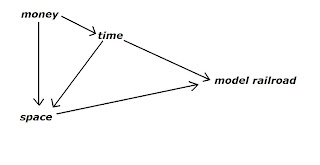Earlier this year, I did an article about what I thought Villard MN looked like when the railroad still ran through town. You can view that article here: http://jjwtrains.blogspot.com/2012/05/good-place-to-model.html
The depot, and one elevator are still left standing today, along with about 200ft of track still in place. Upon writing this article, I was notified by several people about a few errors I had with my story. First, I want to thank two people, the two other people besides myself that commented on the original post. The first person supplied me with a few images that he (For privacy, I'll just use his first name, Keith) and his wife had of Villard MN back in the 30's and in the 60's which I will share with you today with the permission of Keith.
The second person left a very comprehensive comment about Villard's history and the railroad's path through town. I never did get his name, but I thank him none the less
With that said, I felt compelled to reload the post so that all the information is accurate. Now, let's start this post shall we!
History of Villard
Like so many towns in America, Villard MN grew up as a railroad town complete with grain elevators, a stock yard, and a small depot which still stands to this day. The town became reality in 1882 when the Northern Pacific Railroad laid tracks and built the depot within a couple years. Villard was a stopping point for the railroad because it was a few miles from Glenwood, MN, where the Soo Line ran North-South, and the NP running East West. This distance was about how far smaller locomotives could travel in between water and fuel stops. On top of this, plenty of land yielded plenty of wheat, and the main farm transportation to the station was the horse and cart. That said, Villard was in a perfect spot.
At it's peak, the railroad had one depot, three grain elevators, and several stock yards for loading cattle. All in all, Villard was a busy community for the railroad. as time wore on though, the railroads slowly began to lose their grip on transportation. With the advent and perfection of the truck, Villard no longer needed to use quite so many elevators.
One of these elevators burnt down and all that remains today is a concrete footing with part of a shed still attached:
I assume that the second elevator was tore down after it went out of business. The third elevator is in the background and is the only elevator left. This elevator in an old photo provided by Keith shows that it was under the ownership of Great Western Elevator Company before 1936. After the Burlington Northern bought out the Northern Pacific, Villard's tracks were tore out. The elevator is now owned by Villard Implement Company, and to my knowledge is no longer in use.
Today Villard still has the depot and one elevator remaining. A trail runs from Glenwood to Villard on the old main line coming right to the station in the photo above.
Modeling Villard
Anyone wanting to model a small town doesn't need to look any further than Villard. Through the words of the anonymous commenter, here is what Villard, MN looked like at its peak in the 10's-20's:
{Smaller monitors may not show image in great detail. Click image for larger version}
The brown represents the depot and water tower which may have been served by a spur according the the anonymous commenter. The photo above proved this point. I was right about a siding servicing the elevators as shown in the above diagram, but was surprised to learn that Villard had 3 elevators (two are shown in the diagram in gray). Finally, there were stockyards in town. I could not find any photographs about those pens, so that part could remain a mystery unless someone out there knows about these stock pens?The red lines which I have put in indicate possible tracks, or tracks that would be great for modeling purposes. The one on the left could continue on to serve stock pens and maybe a storage building or two. The other track which goes behind the elevators could serve grain storage, or a third elevator.
The blue represents modern day roads in Villard.
Thank you so much for the help on bringing a more accurate light to the history of Villard and this small branch of the Northern Pacific.
-James






